-
EXECUTIVE SUMMARY
-
1.1.
-
Market Overview
-
Key Findings
-
Market Segmentation
-
1.4.
-
Competitive Landscape
-
Challenges and Opportunities
-
Future
-
Outlook
-
MARKET INTRODUCTION
-
Definition
-
Scope of the study
- Research Objective
- Assumption
- Limitations
-
RESEARCH METHODOLOGY
-
Overview
-
3.2.
-
Data Mining
-
Secondary Research
-
Primary Research
- Breakdown of Primary
-
3.4.1.
-
Primary Interviews and Information Gathering Process
-
Respondents
-
Forecasting Model
-
Market Size Estimation
- Top-Down Approach
-
3.6.1.
-
Bottom-Up Approach
-
Data Triangulation
-
Validation
-
MARKET DYNAMICS
-
Overview
-
Drivers
-
Restraints
-
Opportunities
-
MARKET
-
FACTOR ANALYSIS
-
Value chain Analysis
-
Porter''s Five Forces
- Bargaining Power of Suppliers
- Bargaining Power
- Threat of New Entrants
- Threat of Substitutes
- Intensity of Rivalry
-
Analysis
-
of Buyers
-
COVID-19 Impact Analysis
- Regional Impact
- Opportunity and
-
5.3.1.
-
Market Impact Analysis
-
Threat Analysis
-
HEAT TRANSFER FLUID MARKET, BY APPLICATION
-
(USD BILLION)
-
Solar Power Generation
-
Chemical Processing
-
Food and Beverage Processing
-
Oil and Gas
-
Automotive
-
HEAT TRANSFER FLUID MARKET, BY TYPE (USD BILLION)
-
Synthetic
-
Fluids
-
Mineral Oils
-
Water Glycol Solutions
-
Thermal
-
Oils
-
HEAT TRANSFER FLUID MARKET, BY END USE INDUSTRY (USD BILLION)
-
Chemical
-
Oil and Gas
-
Manufacturing
-
Renewable
-
Energy
-
Food and Beverage
-
HEAT TRANSFER FLUID MARKET, BY TEMPERATURE
-
RANGE (USD BILLION)
-
Low Temperature
-
Medium Temperature
-
High Temperature
-
HEAT TRANSFER FLUID MARKET, BY REGIONAL (USD BILLION)
-
North America
- US
- Canada
-
Europe
- Germany
- UK
- France
- Russia
- Italy
- Spain
- Rest of Europe
- China
- India
- Japan
- South
- Malaysia
- Thailand
- Indonesia
- Rest of APAC
-
10.3.
-
APAC
-
Korea
-
South America
- Brazil
- Argentina
- Rest of South America
-
10.4.2.
-
Mexico
-
MEA
- GCC Countries
- South Africa
- Rest of MEA
-
COMPETITIVE LANDSCAPE
-
Overview
-
11.2.
-
Competitive Analysis
-
Market share Analysis
-
Major Growth
-
Strategy in the Heat Transfer Fluid Market
-
Competitive Benchmarking
-
Leading Players in Terms of Number of Developments in the Heat Transfer
-
Fluid Market
-
Key developments and growth strategies
- New
- Merger & Acquisitions
-
Product Launch/Service Deployment
-
11.7.3.
-
Joint Ventures
-
Major Players Financial Matrix
- Sales and
- Major Players R&D Expenditure. 2023
-
Operating Income
-
12.
-
COMPANY PROFILES
-
Thermax
- Financial Overview
- Key Developments
- SWOT Analysis
- Key Strategies
-
12.1.2.
-
Products Offered
-
ExxonMobil
- Financial Overview
- Products Offered
- Key Developments
- SWOT
- Key Strategies
-
Analysis
-
Chevron
- Financial
- Products Offered
- Key Developments
- Key Strategies
-
Overview
-
12.3.4.
-
SWOT Analysis
-
Gibbs Thermal Products
- Financial Overview
- Products Offered
- Key Developments
- SWOT Analysis
- Key Strategies
-
Global Heat
- Financial Overview
- Products Offered
- SWOT Analysis
- Key Strategies
- Financial Overview
- Products Offered
- SWOT Analysis
- Key Strategies
- Financial Overview
- Products Offered
- SWOT Analysis
- Key Strategies
- Financial Overview
- Products Offered
- SWOT Analysis
- Key Strategies
- Financial Overview
- Products Offered
- SWOT Analysis
- Key Strategies
- Financial Overview
- Products Offered
- Key Developments
- SWOT Analysis
- Key
-
Transfer
-
12.5.3.
-
Key Developments
-
12.6.
-
Mellitou
-
12.6.3.
-
Key Developments
-
12.7.
-
Paratherm
-
12.7.3.
-
Key Developments
-
12.8.
-
Solvay
-
12.8.3.
-
Key Developments
-
12.9.
-
Dowtherm
-
12.9.3.
-
Key Developments
-
12.10.
-
Eastman Chemical
-
Strategies
-
Glycol Solutions
- Financial Overview
- Key Developments
- SWOT Analysis
- Key Strategies
-
12.11.2.
-
Products Offered
-
Dow
- Financial Overview
- Products Offered
- Key Developments
- SWOT
- Key Strategies
-
Analysis
-
Fuchs Lubricants
- Products Offered
- Key Developments
- SWOT Analysis
- Key Strategies
-
12.13.1.
-
Financial Overview
-
BASF
- Financial Overview
- Products Offered
- Key
- SWOT Analysis
- Key Strategies
- Financial Overview
- Products Offered
- Key Developments
- SWOT Analysis
- Key
-
Developments
-
12.15.
-
Heat Transfer Fluids
-
Strategies
-
APPENDIX
-
References
-
Related Reports
-
LIST OF TABLES
-
LIST OF ASSUMPTIONS
-
NORTH
-
AMERICA HEAT TRANSFER FLUID MARKET SIZE ESTIMATES & FORECAST, BY APPLICATION,
-
NORTH AMERICA HEAT TRANSFER FLUID MARKET
-
SIZE ESTIMATES & FORECAST, BY TYPE, 2019-2032 (USD BILLIONS)
-
TABLE 4.
-
NORTH AMERICA HEAT TRANSFER FLUID MARKET SIZE ESTIMATES & FORECAST, BY END USE
-
INDUSTRY, 2019-2032 (USD BILLIONS)
-
NORTH AMERICA HEAT TRANSFER FLUID
-
MARKET SIZE ESTIMATES & FORECAST, BY TEMPERATURE RANGE, 2019-2032 (USD BILLIONS)
-
NORTH AMERICA HEAT TRANSFER FLUID MARKET SIZE ESTIMATES & FORECAST,
-
BY REGIONAL, 2019-2032 (USD BILLIONS)
-
US HEAT TRANSFER FLUID MARKET
-
SIZE ESTIMATES & FORECAST, BY APPLICATION, 2019-2032 (USD BILLIONS)
-
TABLE
-
US HEAT TRANSFER FLUID MARKET SIZE ESTIMATES & FORECAST, BY TYPE, 2019-2032
-
(USD BILLIONS)
-
US HEAT TRANSFER FLUID MARKET SIZE ESTIMATES &
-
FORECAST, BY END USE INDUSTRY, 2019-2032 (USD BILLIONS)
-
US HEAT
-
TRANSFER FLUID MARKET SIZE ESTIMATES & FORECAST, BY TEMPERATURE RANGE, 2019-2032
-
(USD BILLIONS)
-
US HEAT TRANSFER FLUID MARKET SIZE ESTIMATES &
-
FORECAST, BY REGIONAL, 2019-2032 (USD BILLIONS)
-
CANADA HEAT TRANSFER
-
FLUID MARKET SIZE ESTIMATES & FORECAST, BY APPLICATION, 2019-2032 (USD BILLIONS)
-
CANADA HEAT TRANSFER FLUID MARKET SIZE ESTIMATES & FORECAST,
-
BY TYPE, 2019-2032 (USD BILLIONS)
-
CANADA HEAT TRANSFER FLUID MARKET
-
SIZE ESTIMATES & FORECAST, BY END USE INDUSTRY, 2019-2032 (USD BILLIONS)
-
CANADA HEAT TRANSFER FLUID MARKET SIZE ESTIMATES & FORECAST, BY
-
TEMPERATURE RANGE, 2019-2032 (USD BILLIONS)
-
CANADA HEAT TRANSFER
-
FLUID MARKET SIZE ESTIMATES & FORECAST, BY REGIONAL, 2019-2032 (USD BILLIONS)
-
EUROPE HEAT TRANSFER FLUID MARKET SIZE ESTIMATES & FORECAST,
-
BY APPLICATION, 2019-2032 (USD BILLIONS)
-
EUROPE HEAT TRANSFER FLUID
-
MARKET SIZE ESTIMATES & FORECAST, BY TYPE, 2019-2032 (USD BILLIONS)
-
TABLE
-
EUROPE HEAT TRANSFER FLUID MARKET SIZE ESTIMATES & FORECAST, BY END USE
-
INDUSTRY, 2019-2032 (USD BILLIONS)
-
EUROPE HEAT TRANSFER FLUID MARKET
-
SIZE ESTIMATES & FORECAST, BY TEMPERATURE RANGE, 2019-2032 (USD BILLIONS)
-
EUROPE HEAT TRANSFER FLUID MARKET SIZE ESTIMATES & FORECAST, BY
-
REGIONAL, 2019-2032 (USD BILLIONS)
-
GERMANY HEAT TRANSFER FLUID MARKET
-
SIZE ESTIMATES & FORECAST, BY APPLICATION, 2019-2032 (USD BILLIONS)
-
TABLE
-
GERMANY HEAT TRANSFER FLUID MARKET SIZE ESTIMATES & FORECAST, BY TYPE, 2019-2032
-
(USD BILLIONS)
-
GERMANY HEAT TRANSFER FLUID MARKET SIZE ESTIMATES
-
& FORECAST, BY END USE INDUSTRY, 2019-2032 (USD BILLIONS)
-
GERMANY
-
HEAT TRANSFER FLUID MARKET SIZE ESTIMATES & FORECAST, BY TEMPERATURE RANGE,
-
GERMANY HEAT TRANSFER FLUID MARKET SIZE
-
ESTIMATES & FORECAST, BY REGIONAL, 2019-2032 (USD BILLIONS)
-
TABLE 27.
-
UK HEAT TRANSFER FLUID MARKET SIZE ESTIMATES & FORECAST, BY APPLICATION, 2019-2032
-
(USD BILLIONS)
-
UK HEAT TRANSFER FLUID MARKET SIZE ESTIMATES &
-
FORECAST, BY TYPE, 2019-2032 (USD BILLIONS)
-
UK HEAT TRANSFER FLUID
-
MARKET SIZE ESTIMATES & FORECAST, BY END USE INDUSTRY, 2019-2032 (USD BILLIONS)
-
UK HEAT TRANSFER FLUID MARKET SIZE ESTIMATES & FORECAST, BY
-
TEMPERATURE RANGE, 2019-2032 (USD BILLIONS)
-
UK HEAT TRANSFER FLUID
-
MARKET SIZE ESTIMATES & FORECAST, BY REGIONAL, 2019-2032 (USD BILLIONS)
-
FRANCE HEAT TRANSFER FLUID MARKET SIZE ESTIMATES & FORECAST, BY
-
APPLICATION, 2019-2032 (USD BILLIONS)
-
FRANCE HEAT TRANSFER FLUID
-
MARKET SIZE ESTIMATES & FORECAST, BY TYPE, 2019-2032 (USD BILLIONS)
-
TABLE
-
FRANCE HEAT TRANSFER FLUID MARKET SIZE ESTIMATES & FORECAST, BY END USE
-
INDUSTRY, 2019-2032 (USD BILLIONS)
-
FRANCE HEAT TRANSFER FLUID MARKET
-
SIZE ESTIMATES & FORECAST, BY TEMPERATURE RANGE, 2019-2032 (USD BILLIONS)
-
FRANCE HEAT TRANSFER FLUID MARKET SIZE ESTIMATES & FORECAST, BY
-
REGIONAL, 2019-2032 (USD BILLIONS)
-
RUSSIA HEAT TRANSFER FLUID MARKET
-
SIZE ESTIMATES & FORECAST, BY APPLICATION, 2019-2032 (USD BILLIONS)
-
TABLE
-
RUSSIA HEAT TRANSFER FLUID MARKET SIZE ESTIMATES & FORECAST, BY TYPE, 2019-2032
-
(USD BILLIONS)
-
RUSSIA HEAT TRANSFER FLUID MARKET SIZE ESTIMATES
-
& FORECAST, BY END USE INDUSTRY, 2019-2032 (USD BILLIONS)
-
RUSSIA
-
HEAT TRANSFER FLUID MARKET SIZE ESTIMATES & FORECAST, BY TEMPERATURE RANGE,
-
RUSSIA HEAT TRANSFER FLUID MARKET SIZE
-
ESTIMATES & FORECAST, BY REGIONAL, 2019-2032 (USD BILLIONS)
-
TABLE 42.
-
ITALY HEAT TRANSFER FLUID MARKET SIZE ESTIMATES & FORECAST, BY APPLICATION,
-
ITALY HEAT TRANSFER FLUID MARKET SIZE ESTIMATES
-
& FORECAST, BY TYPE, 2019-2032 (USD BILLIONS)
-
ITALY HEAT TRANSFER
-
FLUID MARKET SIZE ESTIMATES & FORECAST, BY END USE INDUSTRY, 2019-2032 (USD
-
BILLIONS)
-
ITALY HEAT TRANSFER FLUID MARKET SIZE ESTIMATES &
-
FORECAST, BY TEMPERATURE RANGE, 2019-2032 (USD BILLIONS)
-
ITALY HEAT
-
TRANSFER FLUID MARKET SIZE ESTIMATES & FORECAST, BY REGIONAL, 2019-2032 (USD
-
BILLIONS)
-
SPAIN HEAT TRANSFER FLUID MARKET SIZE ESTIMATES &
-
FORECAST, BY APPLICATION, 2019-2032 (USD BILLIONS)
-
SPAIN HEAT TRANSFER
-
FLUID MARKET SIZE ESTIMATES & FORECAST, BY TYPE, 2019-2032 (USD BILLIONS)
-
SPAIN HEAT TRANSFER FLUID MARKET SIZE ESTIMATES & FORECAST, BY END
-
USE INDUSTRY, 2019-2032 (USD BILLIONS)
-
SPAIN HEAT TRANSFER FLUID
-
MARKET SIZE ESTIMATES & FORECAST, BY TEMPERATURE RANGE, 2019-2032 (USD BILLIONS)
-
SPAIN HEAT TRANSFER FLUID MARKET SIZE ESTIMATES & FORECAST,
-
BY REGIONAL, 2019-2032 (USD BILLIONS)
-
REST OF EUROPE HEAT TRANSFER
-
FLUID MARKET SIZE ESTIMATES & FORECAST, BY APPLICATION, 2019-2032 (USD BILLIONS)
-
REST OF EUROPE HEAT TRANSFER FLUID MARKET SIZE ESTIMATES & FORECAST,
-
BY TYPE, 2019-2032 (USD BILLIONS)
-
REST OF EUROPE HEAT TRANSFER FLUID
-
MARKET SIZE ESTIMATES & FORECAST, BY END USE INDUSTRY, 2019-2032 (USD BILLIONS)
-
REST OF EUROPE HEAT TRANSFER FLUID MARKET SIZE ESTIMATES & FORECAST,
-
BY TEMPERATURE RANGE, 2019-2032 (USD BILLIONS)
-
REST OF EUROPE HEAT
-
TRANSFER FLUID MARKET SIZE ESTIMATES & FORECAST, BY REGIONAL, 2019-2032 (USD
-
BILLIONS)
-
APAC HEAT TRANSFER FLUID MARKET SIZE ESTIMATES & FORECAST,
-
BY APPLICATION, 2019-2032 (USD BILLIONS)
-
APAC HEAT TRANSFER FLUID
-
MARKET SIZE ESTIMATES & FORECAST, BY TYPE, 2019-2032 (USD BILLIONS)
-
TABLE
-
APAC HEAT TRANSFER FLUID MARKET SIZE ESTIMATES & FORECAST, BY END USE INDUSTRY,
-
APAC HEAT TRANSFER FLUID MARKET SIZE ESTIMATES
-
& FORECAST, BY TEMPERATURE RANGE, 2019-2032 (USD BILLIONS)
-
APAC
-
HEAT TRANSFER FLUID MARKET SIZE ESTIMATES & FORECAST, BY REGIONAL, 2019-2032
-
(USD BILLIONS)
-
CHINA HEAT TRANSFER FLUID MARKET SIZE ESTIMATES &
-
FORECAST, BY APPLICATION, 2019-2032 (USD BILLIONS)
-
CHINA HEAT TRANSFER
-
FLUID MARKET SIZE ESTIMATES & FORECAST, BY TYPE, 2019-2032 (USD BILLIONS)
-
CHINA HEAT TRANSFER FLUID MARKET SIZE ESTIMATES & FORECAST, BY END
-
USE INDUSTRY, 2019-2032 (USD BILLIONS)
-
CHINA HEAT TRANSFER FLUID
-
MARKET SIZE ESTIMATES & FORECAST, BY TEMPERATURE RANGE, 2019-2032 (USD BILLIONS)
-
CHINA HEAT TRANSFER FLUID MARKET SIZE ESTIMATES & FORECAST,
-
BY REGIONAL, 2019-2032 (USD BILLIONS)
-
INDIA HEAT TRANSFER FLUID
-
MARKET SIZE ESTIMATES & FORECAST, BY APPLICATION, 2019-2032 (USD BILLIONS)
-
INDIA HEAT TRANSFER FLUID MARKET SIZE ESTIMATES & FORECAST, BY TYPE,
-
INDIA HEAT TRANSFER FLUID MARKET SIZE ESTIMATES
-
& FORECAST, BY END USE INDUSTRY, 2019-2032 (USD BILLIONS)
-
INDIA
-
HEAT TRANSFER FLUID MARKET SIZE ESTIMATES & FORECAST, BY TEMPERATURE RANGE,
-
INDIA HEAT TRANSFER FLUID MARKET SIZE ESTIMATES
-
& FORECAST, BY REGIONAL, 2019-2032 (USD BILLIONS)
-
JAPAN HEAT
-
TRANSFER FLUID MARKET SIZE ESTIMATES & FORECAST, BY APPLICATION, 2019-2032 (USD
-
BILLIONS)
-
JAPAN HEAT TRANSFER FLUID MARKET SIZE ESTIMATES &
-
FORECAST, BY TYPE, 2019-2032 (USD BILLIONS)
-
JAPAN HEAT TRANSFER
-
FLUID MARKET SIZE ESTIMATES & FORECAST, BY END USE INDUSTRY, 2019-2032 (USD
-
BILLIONS)
-
JAPAN HEAT TRANSFER FLUID MARKET SIZE ESTIMATES &
-
FORECAST, BY TEMPERATURE RANGE, 2019-2032 (USD BILLIONS)
-
JAPAN HEAT
-
TRANSFER FLUID MARKET SIZE ESTIMATES & FORECAST, BY REGIONAL, 2019-2032 (USD
-
BILLIONS)
-
SOUTH KOREA HEAT TRANSFER FLUID MARKET SIZE ESTIMATES
-
& FORECAST, BY APPLICATION, 2019-2032 (USD BILLIONS)
-
SOUTH KOREA
-
HEAT TRANSFER FLUID MARKET SIZE ESTIMATES & FORECAST, BY TYPE, 2019-2032 (USD
-
BILLIONS)
-
SOUTH KOREA HEAT TRANSFER FLUID MARKET SIZE ESTIMATES
-
& FORECAST, BY END USE INDUSTRY, 2019-2032 (USD BILLIONS)
-
SOUTH
-
KOREA HEAT TRANSFER FLUID MARKET SIZE ESTIMATES & FORECAST, BY TEMPERATURE RANGE,
-
SOUTH KOREA HEAT TRANSFER FLUID MARKET
-
SIZE ESTIMATES & FORECAST, BY REGIONAL, 2019-2032 (USD BILLIONS)
-
TABLE
-
MALAYSIA HEAT TRANSFER FLUID MARKET SIZE ESTIMATES & FORECAST, BY APPLICATION,
-
MALAYSIA HEAT TRANSFER FLUID MARKET SIZE
-
ESTIMATES & FORECAST, BY TYPE, 2019-2032 (USD BILLIONS)
-
MALAYSIA
-
HEAT TRANSFER FLUID MARKET SIZE ESTIMATES & FORECAST, BY END USE INDUSTRY, 2019-2032
-
(USD BILLIONS)
-
MALAYSIA HEAT TRANSFER FLUID MARKET SIZE ESTIMATES
-
& FORECAST, BY TEMPERATURE RANGE, 2019-2032 (USD BILLIONS)
-
MALAYSIA
-
HEAT TRANSFER FLUID MARKET SIZE ESTIMATES & FORECAST, BY REGIONAL, 2019-2032
-
(USD BILLIONS)
-
THAILAND HEAT TRANSFER FLUID MARKET SIZE ESTIMATES
-
& FORECAST, BY APPLICATION, 2019-2032 (USD BILLIONS)
-
THAILAND
-
HEAT TRANSFER FLUID MARKET SIZE ESTIMATES & FORECAST, BY TYPE, 2019-2032 (USD
-
BILLIONS)
-
THAILAND HEAT TRANSFER FLUID MARKET SIZE ESTIMATES &
-
FORECAST, BY END USE INDUSTRY, 2019-2032 (USD BILLIONS)
-
THAILAND
-
HEAT TRANSFER FLUID MARKET SIZE ESTIMATES & FORECAST, BY TEMPERATURE RANGE,
-
THAILAND HEAT TRANSFER FLUID MARKET SIZE
-
ESTIMATES & FORECAST, BY REGIONAL, 2019-2032 (USD BILLIONS)
-
TABLE 92.
-
INDONESIA HEAT TRANSFER FLUID MARKET SIZE ESTIMATES & FORECAST, BY APPLICATION,
-
INDONESIA HEAT TRANSFER FLUID MARKET SIZE
-
ESTIMATES & FORECAST, BY TYPE, 2019-2032 (USD BILLIONS)
-
INDONESIA
-
HEAT TRANSFER FLUID MARKET SIZE ESTIMATES & FORECAST, BY END USE INDUSTRY, 2019-2032
-
(USD BILLIONS)
-
INDONESIA HEAT TRANSFER FLUID MARKET SIZE ESTIMATES
-
& FORECAST, BY TEMPERATURE RANGE, 2019-2032 (USD BILLIONS)
-
INDONESIA
-
HEAT TRANSFER FLUID MARKET SIZE ESTIMATES & FORECAST, BY REGIONAL, 2019-2032
-
(USD BILLIONS)
-
REST OF APAC HEAT TRANSFER FLUID MARKET SIZE ESTIMATES
-
& FORECAST, BY APPLICATION, 2019-2032 (USD BILLIONS)
-
REST OF
-
APAC HEAT TRANSFER FLUID MARKET SIZE ESTIMATES & FORECAST, BY TYPE, 2019-2032
-
(USD BILLIONS)
-
REST OF APAC HEAT TRANSFER FLUID MARKET SIZE ESTIMATES
-
& FORECAST, BY END USE INDUSTRY, 2019-2032 (USD BILLIONS)
-
REST
-
OF APAC HEAT TRANSFER FLUID MARKET SIZE ESTIMATES & FORECAST, BY TEMPERATURE
-
RANGE, 2019-2032 (USD BILLIONS)
-
REST OF APAC HEAT TRANSFER FLUID
-
MARKET SIZE ESTIMATES & FORECAST, BY REGIONAL, 2019-2032 (USD BILLIONS)
-
SOUTH AMERICA HEAT TRANSFER FLUID MARKET SIZE ESTIMATES & FORECAST,
-
BY APPLICATION, 2019-2032 (USD BILLIONS)
-
SOUTH AMERICA HEAT TRANSFER
-
FLUID MARKET SIZE ESTIMATES & FORECAST, BY TYPE, 2019-2032 (USD BILLIONS)
-
SOUTH AMERICA HEAT TRANSFER FLUID MARKET SIZE ESTIMATES & FORECAST,
-
BY END USE INDUSTRY, 2019-2032 (USD BILLIONS)
-
SOUTH AMERICA HEAT
-
TRANSFER FLUID MARKET SIZE ESTIMATES & FORECAST, BY TEMPERATURE RANGE, 2019-2032
-
(USD BILLIONS)
-
SOUTH AMERICA HEAT TRANSFER FLUID MARKET SIZE ESTIMATES
-
& FORECAST, BY REGIONAL, 2019-2032 (USD BILLIONS)
-
BRAZIL HEAT
-
TRANSFER FLUID MARKET SIZE ESTIMATES & FORECAST, BY APPLICATION, 2019-2032 (USD
-
BILLIONS)
-
BRAZIL HEAT TRANSFER FLUID MARKET SIZE ESTIMATES &
-
FORECAST, BY TYPE, 2019-2032 (USD BILLIONS)
-
BRAZIL HEAT TRANSFER
-
FLUID MARKET SIZE ESTIMATES & FORECAST, BY END USE INDUSTRY, 2019-2032 (USD
-
BILLIONS)
-
BRAZIL HEAT TRANSFER FLUID MARKET SIZE ESTIMATES &
-
FORECAST, BY TEMPERATURE RANGE, 2019-2032 (USD BILLIONS)
-
BRAZIL
-
HEAT TRANSFER FLUID MARKET SIZE ESTIMATES & FORECAST, BY REGIONAL, 2019-2032
-
(USD BILLIONS)
-
MEXICO HEAT TRANSFER FLUID MARKET SIZE ESTIMATES
-
& FORECAST, BY APPLICATION, 2019-2032 (USD BILLIONS)
-
MEXICO
-
HEAT TRANSFER FLUID MARKET SIZE ESTIMATES & FORECAST, BY TYPE, 2019-2032 (USD
-
BILLIONS)
-
MEXICO HEAT TRANSFER FLUID MARKET SIZE ESTIMATES &
-
FORECAST, BY END USE INDUSTRY, 2019-2032 (USD BILLIONS)
-
MEXICO
-
HEAT TRANSFER FLUID MARKET SIZE ESTIMATES & FORECAST, BY TEMPERATURE RANGE,
-
MEXICO HEAT TRANSFER FLUID MARKET SIZE
-
ESTIMATES & FORECAST, BY REGIONAL, 2019-2032 (USD BILLIONS)
-
TABLE 117.
-
ARGENTINA HEAT TRANSFER FLUID MARKET SIZE ESTIMATES & FORECAST, BY APPLICATION,
-
ARGENTINA HEAT TRANSFER FLUID MARKET SIZE
-
ESTIMATES & FORECAST, BY TYPE, 2019-2032 (USD BILLIONS)
-
ARGENTINA
-
HEAT TRANSFER FLUID MARKET SIZE ESTIMATES & FORECAST, BY END USE INDUSTRY, 2019-2032
-
(USD BILLIONS)
-
ARGENTINA HEAT TRANSFER FLUID MARKET SIZE ESTIMATES
-
& FORECAST, BY TEMPERATURE RANGE, 2019-2032 (USD BILLIONS)
-
TABLE 121.
-
ARGENTINA HEAT TRANSFER FLUID MARKET SIZE ESTIMATES & FORECAST, BY REGIONAL,
-
REST OF SOUTH AMERICA HEAT TRANSFER FLUID
-
MARKET SIZE ESTIMATES & FORECAST, BY APPLICATION, 2019-2032 (USD BILLIONS)
-
REST OF SOUTH AMERICA HEAT TRANSFER FLUID MARKET SIZE ESTIMATES &
-
FORECAST, BY TYPE, 2019-2032 (USD BILLIONS)
-
REST OF SOUTH AMERICA
-
HEAT TRANSFER FLUID MARKET SIZE ESTIMATES & FORECAST, BY END USE INDUSTRY, 2019-2032
-
(USD BILLIONS)
-
REST OF SOUTH AMERICA HEAT TRANSFER FLUID MARKET
-
SIZE ESTIMATES & FORECAST, BY TEMPERATURE RANGE, 2019-2032 (USD BILLIONS)
-
REST OF SOUTH AMERICA HEAT TRANSFER FLUID MARKET SIZE ESTIMATES &
-
FORECAST, BY REGIONAL, 2019-2032 (USD BILLIONS)
-
MEA HEAT TRANSFER
-
FLUID MARKET SIZE ESTIMATES & FORECAST, BY APPLICATION, 2019-2032 (USD BILLIONS)
-
MEA HEAT TRANSFER FLUID MARKET SIZE ESTIMATES & FORECAST, BY
-
TYPE, 2019-2032 (USD BILLIONS)
-
MEA HEAT TRANSFER FLUID MARKET SIZE
-
ESTIMATES & FORECAST, BY END USE INDUSTRY, 2019-2032 (USD BILLIONS)
-
TABLE
-
MEA HEAT TRANSFER FLUID MARKET SIZE ESTIMATES & FORECAST, BY TEMPERATURE
-
RANGE, 2019-2032 (USD BILLIONS)
-
MEA HEAT TRANSFER FLUID MARKET
-
SIZE ESTIMATES & FORECAST, BY REGIONAL, 2019-2032 (USD BILLIONS)
-
TABLE
-
GCC COUNTRIES HEAT TRANSFER FLUID MARKET SIZE ESTIMATES & FORECAST, BY
-
APPLICATION, 2019-2032 (USD BILLIONS)
-
GCC COUNTRIES HEAT TRANSFER
-
FLUID MARKET SIZE ESTIMATES & FORECAST, BY TYPE, 2019-2032 (USD BILLIONS)
-
GCC COUNTRIES HEAT TRANSFER FLUID MARKET SIZE ESTIMATES & FORECAST,
-
BY END USE INDUSTRY, 2019-2032 (USD BILLIONS)
-
GCC COUNTRIES HEAT
-
TRANSFER FLUID MARKET SIZE ESTIMATES & FORECAST, BY TEMPERATURE RANGE, 2019-2032
-
(USD BILLIONS)
-
GCC COUNTRIES HEAT TRANSFER FLUID MARKET SIZE ESTIMATES
-
& FORECAST, BY REGIONAL, 2019-2032 (USD BILLIONS)
-
SOUTH AFRICA
-
HEAT TRANSFER FLUID MARKET SIZE ESTIMATES & FORECAST, BY APPLICATION, 2019-2032
-
(USD BILLIONS)
-
SOUTH AFRICA HEAT TRANSFER FLUID MARKET SIZE ESTIMATES
-
& FORECAST, BY TYPE, 2019-2032 (USD BILLIONS)
-
SOUTH AFRICA
-
HEAT TRANSFER FLUID MARKET SIZE ESTIMATES & FORECAST, BY END USE INDUSTRY, 2019-2032
-
(USD BILLIONS)
-
SOUTH AFRICA HEAT TRANSFER FLUID MARKET SIZE ESTIMATES
-
& FORECAST, BY TEMPERATURE RANGE, 2019-2032 (USD BILLIONS)
-
TABLE 141.
-
SOUTH AFRICA HEAT TRANSFER FLUID MARKET SIZE ESTIMATES & FORECAST, BY REGIONAL,
-
REST OF MEA HEAT TRANSFER FLUID MARKET
-
SIZE ESTIMATES & FORECAST, BY APPLICATION, 2019-2032 (USD BILLIONS)
-
TABLE
-
REST OF MEA HEAT TRANSFER FLUID MARKET SIZE ESTIMATES & FORECAST, BY TYPE,
-
REST OF MEA HEAT TRANSFER FLUID MARKET
-
SIZE ESTIMATES & FORECAST, BY END USE INDUSTRY, 2019-2032 (USD BILLIONS)
-
REST OF MEA HEAT TRANSFER FLUID MARKET SIZE ESTIMATES & FORECAST,
-
BY TEMPERATURE RANGE, 2019-2032 (USD BILLIONS)
-
REST OF MEA HEAT
-
TRANSFER FLUID MARKET SIZE ESTIMATES & FORECAST, BY REGIONAL, 2019-2032 (USD
-
BILLIONS)
-
PRODUCT LAUNCH/PRODUCT DEVELOPMENT/APPROVAL
-
TABLE
-
ACQUISITION/PARTNERSHIP
-
LIST OF FIGURES
-
FIGURE 1.
-
MARKET SYNOPSIS
-
NORTH AMERICA HEAT TRANSFER FLUID MARKET ANALYSIS
-
US HEAT TRANSFER FLUID MARKET ANALYSIS BY APPLICATION
-
FIGURE
-
US HEAT TRANSFER FLUID MARKET ANALYSIS BY TYPE
-
US HEAT TRANSFER
-
FLUID MARKET ANALYSIS BY END USE INDUSTRY
-
US HEAT TRANSFER FLUID
-
MARKET ANALYSIS BY TEMPERATURE RANGE
-
US HEAT TRANSFER FLUID MARKET
-
ANALYSIS BY REGIONAL
-
CANADA HEAT TRANSFER FLUID MARKET ANALYSIS
-
BY APPLICATION
-
CANADA HEAT TRANSFER FLUID MARKET ANALYSIS BY TYPE
-
CANADA HEAT TRANSFER FLUID MARKET ANALYSIS BY END USE INDUSTRY
-
CANADA HEAT TRANSFER FLUID MARKET ANALYSIS BY TEMPERATURE RANGE
-
CANADA HEAT TRANSFER FLUID MARKET ANALYSIS BY REGIONAL
-
FIGURE
-
EUROPE HEAT TRANSFER FLUID MARKET ANALYSIS
-
GERMANY HEAT TRANSFER
-
FLUID MARKET ANALYSIS BY APPLICATION
-
GERMANY HEAT TRANSFER FLUID
-
MARKET ANALYSIS BY TYPE
-
GERMANY HEAT TRANSFER FLUID MARKET ANALYSIS
-
BY END USE INDUSTRY
-
GERMANY HEAT TRANSFER FLUID MARKET ANALYSIS
-
BY TEMPERATURE RANGE
-
GERMANY HEAT TRANSFER FLUID MARKET ANALYSIS
-
BY REGIONAL
-
UK HEAT TRANSFER FLUID MARKET ANALYSIS BY APPLICATION
-
UK HEAT TRANSFER FLUID MARKET ANALYSIS BY TYPE
-
FIGURE 21.
-
UK HEAT TRANSFER FLUID MARKET ANALYSIS BY END USE INDUSTRY
-
UK HEAT
-
TRANSFER FLUID MARKET ANALYSIS BY TEMPERATURE RANGE
-
UK HEAT TRANSFER
-
FLUID MARKET ANALYSIS BY REGIONAL
-
FRANCE HEAT TRANSFER FLUID MARKET
-
ANALYSIS BY APPLICATION
-
FRANCE HEAT TRANSFER FLUID MARKET ANALYSIS
-
BY TYPE
-
FRANCE HEAT TRANSFER FLUID MARKET ANALYSIS BY END USE INDUSTRY
-
FRANCE HEAT TRANSFER FLUID MARKET ANALYSIS BY TEMPERATURE RANGE
-
FRANCE HEAT TRANSFER FLUID MARKET ANALYSIS BY REGIONAL
-
FIGURE
-
RUSSIA HEAT TRANSFER FLUID MARKET ANALYSIS BY APPLICATION
-
RUSSIA
-
HEAT TRANSFER FLUID MARKET ANALYSIS BY TYPE
-
RUSSIA HEAT TRANSFER
-
FLUID MARKET ANALYSIS BY END USE INDUSTRY
-
RUSSIA HEAT TRANSFER
-
FLUID MARKET ANALYSIS BY TEMPERATURE RANGE
-
RUSSIA HEAT TRANSFER
-
FLUID MARKET ANALYSIS BY REGIONAL
-
ITALY HEAT TRANSFER FLUID MARKET
-
ANALYSIS BY APPLICATION
-
ITALY HEAT TRANSFER FLUID MARKET ANALYSIS
-
BY TYPE
-
ITALY HEAT TRANSFER FLUID MARKET ANALYSIS BY END USE INDUSTRY
-
ITALY HEAT TRANSFER FLUID MARKET ANALYSIS BY TEMPERATURE RANGE
-
ITALY HEAT TRANSFER FLUID MARKET ANALYSIS BY REGIONAL
-
FIGURE
-
SPAIN HEAT TRANSFER FLUID MARKET ANALYSIS BY APPLICATION
-
SPAIN
-
HEAT TRANSFER FLUID MARKET ANALYSIS BY TYPE
-
SPAIN HEAT TRANSFER
-
FLUID MARKET ANALYSIS BY END USE INDUSTRY
-
SPAIN HEAT TRANSFER FLUID
-
MARKET ANALYSIS BY TEMPERATURE RANGE
-
SPAIN HEAT TRANSFER FLUID
-
MARKET ANALYSIS BY REGIONAL
-
REST OF EUROPE HEAT TRANSFER FLUID
-
MARKET ANALYSIS BY APPLICATION
-
REST OF EUROPE HEAT TRANSFER FLUID
-
MARKET ANALYSIS BY TYPE
-
REST OF EUROPE HEAT TRANSFER FLUID MARKET
-
ANALYSIS BY END USE INDUSTRY
-
REST OF EUROPE HEAT TRANSFER FLUID
-
MARKET ANALYSIS BY TEMPERATURE RANGE
-
REST OF EUROPE HEAT TRANSFER
-
FLUID MARKET ANALYSIS BY REGIONAL
-
APAC HEAT TRANSFER FLUID MARKET
-
ANALYSIS
-
CHINA HEAT TRANSFER FLUID MARKET ANALYSIS BY APPLICATION
-
CHINA HEAT TRANSFER FLUID MARKET ANALYSIS BY TYPE
-
FIGURE
-
CHINA HEAT TRANSFER FLUID MARKET ANALYSIS BY END USE INDUSTRY
-
FIGURE 53.
-
CHINA HEAT TRANSFER FLUID MARKET ANALYSIS BY TEMPERATURE RANGE
-
FIGURE 54.
-
CHINA HEAT TRANSFER FLUID MARKET ANALYSIS BY REGIONAL
-
INDIA HEAT
-
TRANSFER FLUID MARKET ANALYSIS BY APPLICATION
-
INDIA HEAT TRANSFER
-
FLUID MARKET ANALYSIS BY TYPE
-
INDIA HEAT TRANSFER FLUID MARKET
-
ANALYSIS BY END USE INDUSTRY
-
INDIA HEAT TRANSFER FLUID MARKET ANALYSIS
-
BY TEMPERATURE RANGE
-
INDIA HEAT TRANSFER FLUID MARKET ANALYSIS
-
BY REGIONAL
-
JAPAN HEAT TRANSFER FLUID MARKET ANALYSIS BY APPLICATION
-
JAPAN HEAT TRANSFER FLUID MARKET ANALYSIS BY TYPE
-
FIGURE
-
JAPAN HEAT TRANSFER FLUID MARKET ANALYSIS BY END USE INDUSTRY
-
FIGURE 63.
-
JAPAN HEAT TRANSFER FLUID MARKET ANALYSIS BY TEMPERATURE RANGE
-
FIGURE 64.
-
JAPAN HEAT TRANSFER FLUID MARKET ANALYSIS BY REGIONAL
-
SOUTH KOREA
-
HEAT TRANSFER FLUID MARKET ANALYSIS BY APPLICATION
-
SOUTH KOREA
-
HEAT TRANSFER FLUID MARKET ANALYSIS BY TYPE
-
SOUTH KOREA HEAT TRANSFER
-
FLUID MARKET ANALYSIS BY END USE INDUSTRY
-
SOUTH KOREA HEAT TRANSFER
-
FLUID MARKET ANALYSIS BY TEMPERATURE RANGE
-
SOUTH KOREA HEAT TRANSFER
-
FLUID MARKET ANALYSIS BY REGIONAL
-
MALAYSIA HEAT TRANSFER FLUID
-
MARKET ANALYSIS BY APPLICATION
-
MALAYSIA HEAT TRANSFER FLUID MARKET
-
ANALYSIS BY TYPE
-
MALAYSIA HEAT TRANSFER FLUID MARKET ANALYSIS BY
-
END USE INDUSTRY
-
MALAYSIA HEAT TRANSFER FLUID MARKET ANALYSIS BY
-
TEMPERATURE RANGE
-
MALAYSIA HEAT TRANSFER FLUID MARKET ANALYSIS
-
BY REGIONAL
-
THAILAND HEAT TRANSFER FLUID MARKET ANALYSIS BY APPLICATION
-
THAILAND HEAT TRANSFER FLUID MARKET ANALYSIS BY TYPE
-
FIGURE
-
THAILAND HEAT TRANSFER FLUID MARKET ANALYSIS BY END USE INDUSTRY
-
FIGURE
-
THAILAND HEAT TRANSFER FLUID MARKET ANALYSIS BY TEMPERATURE RANGE
-
FIGURE
-
THAILAND HEAT TRANSFER FLUID MARKET ANALYSIS BY REGIONAL
-
INDONESIA
-
HEAT TRANSFER FLUID MARKET ANALYSIS BY APPLICATION
-
INDONESIA HEAT
-
TRANSFER FLUID MARKET ANALYSIS BY TYPE
-
INDONESIA HEAT TRANSFER
-
FLUID MARKET ANALYSIS BY END USE INDUSTRY
-
INDONESIA HEAT TRANSFER
-
FLUID MARKET ANALYSIS BY TEMPERATURE RANGE
-
INDONESIA HEAT TRANSFER
-
FLUID MARKET ANALYSIS BY REGIONAL
-
REST OF APAC HEAT TRANSFER FLUID
-
MARKET ANALYSIS BY APPLICATION
-
REST OF APAC HEAT TRANSFER FLUID
-
MARKET ANALYSIS BY TYPE
-
REST OF APAC HEAT TRANSFER FLUID MARKET
-
ANALYSIS BY END USE INDUSTRY
-
REST OF APAC HEAT TRANSFER FLUID MARKET
-
ANALYSIS BY TEMPERATURE RANGE
-
REST OF APAC HEAT TRANSFER FLUID
-
MARKET ANALYSIS BY REGIONAL
-
SOUTH AMERICA HEAT TRANSFER FLUID MARKET
-
ANALYSIS
-
BRAZIL HEAT TRANSFER FLUID MARKET ANALYSIS BY APPLICATION
-
BRAZIL HEAT TRANSFER FLUID MARKET ANALYSIS BY TYPE
-
FIGURE
-
BRAZIL HEAT TRANSFER FLUID MARKET ANALYSIS BY END USE INDUSTRY
-
FIGURE
-
BRAZIL HEAT TRANSFER FLUID MARKET ANALYSIS BY TEMPERATURE RANGE
-
FIGURE
-
BRAZIL HEAT TRANSFER FLUID MARKET ANALYSIS BY REGIONAL
-
MEXICO
-
HEAT TRANSFER FLUID MARKET ANALYSIS BY APPLICATION
-
MEXICO HEAT
-
TRANSFER FLUID MARKET ANALYSIS BY TYPE
-
MEXICO HEAT TRANSFER FLUID
-
MARKET ANALYSIS BY END USE INDUSTRY
-
MEXICO HEAT TRANSFER FLUID
-
MARKET ANALYSIS BY TEMPERATURE RANGE
-
MEXICO HEAT TRANSFER FLUID
-
MARKET ANALYSIS BY REGIONAL
-
ARGENTINA HEAT TRANSFER FLUID MARKET
-
ANALYSIS BY APPLICATION
-
ARGENTINA HEAT TRANSFER FLUID MARKET ANALYSIS
-
BY TYPE
-
ARGENTINA HEAT TRANSFER FLUID MARKET ANALYSIS BY END USE
-
INDUSTRY
-
ARGENTINA HEAT TRANSFER FLUID MARKET ANALYSIS BY TEMPERATURE
-
RANGE
-
ARGENTINA HEAT TRANSFER FLUID MARKET ANALYSIS BY REGIONAL
-
REST OF SOUTH AMERICA HEAT TRANSFER FLUID MARKET ANALYSIS BY APPLICATION
-
REST OF SOUTH AMERICA HEAT TRANSFER FLUID MARKET ANALYSIS BY TYPE
-
REST OF SOUTH AMERICA HEAT TRANSFER FLUID MARKET ANALYSIS BY END
-
USE INDUSTRY
-
REST OF SOUTH AMERICA HEAT TRANSFER FLUID MARKET
-
ANALYSIS BY TEMPERATURE RANGE
-
REST OF SOUTH AMERICA HEAT TRANSFER
-
FLUID MARKET ANALYSIS BY REGIONAL
-
MEA HEAT TRANSFER FLUID MARKET
-
ANALYSIS
-
GCC COUNTRIES HEAT TRANSFER FLUID MARKET ANALYSIS BY
-
APPLICATION
-
GCC COUNTRIES HEAT TRANSFER FLUID MARKET ANALYSIS
-
BY TYPE
-
GCC COUNTRIES HEAT TRANSFER FLUID MARKET ANALYSIS BY END
-
USE INDUSTRY
-
GCC COUNTRIES HEAT TRANSFER FLUID MARKET ANALYSIS
-
BY TEMPERATURE RANGE
-
GCC COUNTRIES HEAT TRANSFER FLUID MARKET
-
ANALYSIS BY REGIONAL
-
SOUTH AFRICA HEAT TRANSFER FLUID MARKET ANALYSIS
-
BY APPLICATION
-
SOUTH AFRICA HEAT TRANSFER FLUID MARKET ANALYSIS
-
BY TYPE
-
SOUTH AFRICA HEAT TRANSFER FLUID MARKET ANALYSIS BY END
-
USE INDUSTRY
-
SOUTH AFRICA HEAT TRANSFER FLUID MARKET ANALYSIS
-
BY TEMPERATURE RANGE
-
SOUTH AFRICA HEAT TRANSFER FLUID MARKET ANALYSIS
-
BY REGIONAL
-
REST OF MEA HEAT TRANSFER FLUID MARKET ANALYSIS BY
-
APPLICATION
-
REST OF MEA HEAT TRANSFER FLUID MARKET ANALYSIS BY
-
TYPE
-
REST OF MEA HEAT TRANSFER FLUID MARKET ANALYSIS BY END USE
-
INDUSTRY
-
REST OF MEA HEAT TRANSFER FLUID MARKET ANALYSIS BY TEMPERATURE
-
RANGE
-
REST OF MEA HEAT TRANSFER FLUID MARKET ANALYSIS BY REGIONAL
-
KEY BUYING CRITERIA OF HEAT TRANSFER FLUID MARKET
-
FIGURE
-
RESEARCH PROCESS OF MRFR
-
DRO ANALYSIS OF HEAT TRANSFER FLUID
-
MARKET
-
DRIVERS IMPACT ANALYSIS: HEAT TRANSFER FLUID MARKET
-
RESTRAINTS IMPACT ANALYSIS: HEAT TRANSFER FLUID MARKET
-
FIGURE
-
SUPPLY / VALUE CHAIN: HEAT TRANSFER FLUID MARKET
-
HEAT TRANSFER
-
FLUID MARKET, BY APPLICATION, 2024 (% SHARE)
-
HEAT TRANSFER FLUID
-
MARKET, BY APPLICATION, 2019 TO 2032 (USD Billions)
-
HEAT TRANSFER
-
FLUID MARKET, BY TYPE, 2024 (% SHARE)
-
HEAT TRANSFER FLUID MARKET,
-
BY TYPE, 2019 TO 2032 (USD Billions)
-
HEAT TRANSFER FLUID MARKET,
-
BY END USE INDUSTRY, 2024 (% SHARE)
-
HEAT TRANSFER FLUID MARKET,
-
BY END USE INDUSTRY, 2019 TO 2032 (USD Billions)
-
HEAT TRANSFER
-
FLUID MARKET, BY TEMPERATURE RANGE, 2024 (% SHARE)
-
HEAT TRANSFER
-
FLUID MARKET, BY TEMPERATURE RANGE, 2019 TO 2032 (USD Billions)
-
FIGURE 141.
-
HEAT TRANSFER FLUID MARKET, BY REGIONAL, 2024 (% SHARE)
-
HEAT TRANSFER
-
FLUID MARKET, BY REGIONAL, 2019 TO 2032 (USD Billions)
-
BENCHMARKING
-
OF MAJOR COMPETITORS
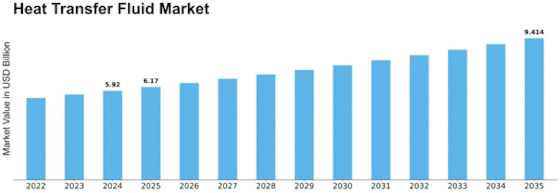

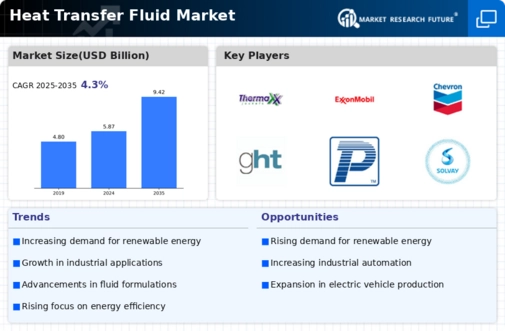
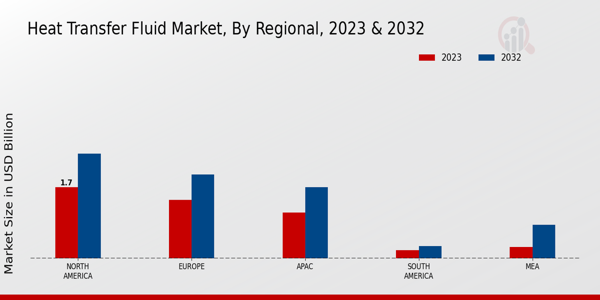



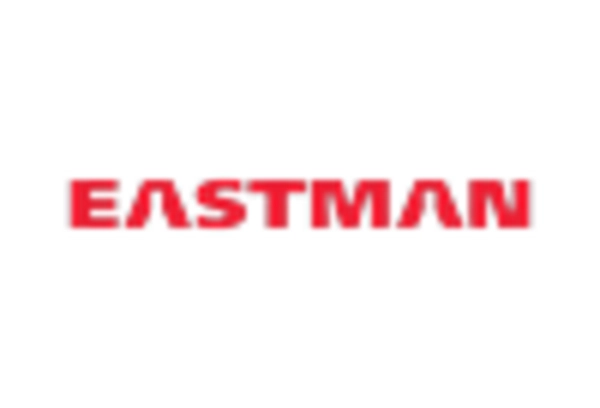
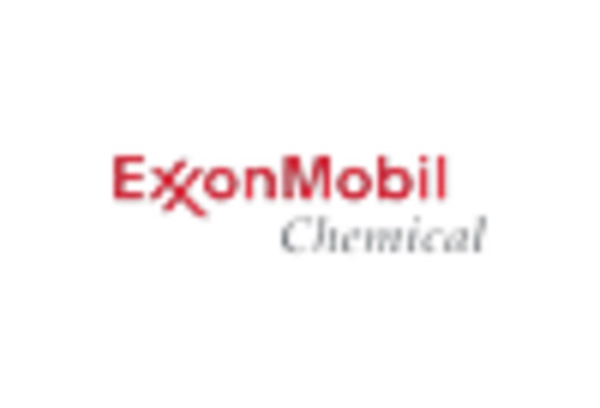


Leave a Comment